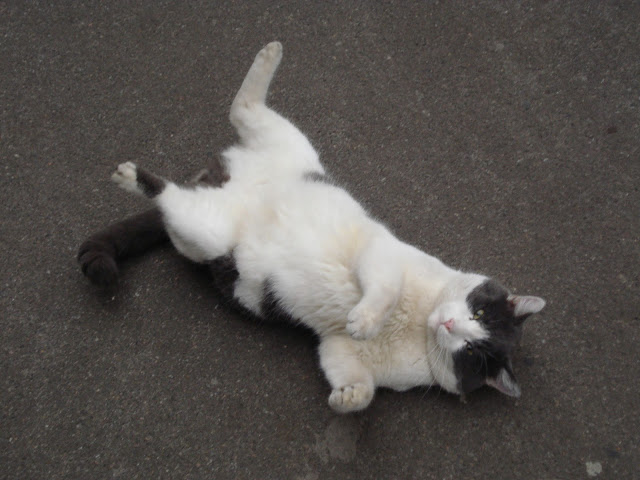History of Tea
According to an ancient legend, the emperor Shen Nung, the creator of Chinese medicine, discovered tea accidentally in 2737 BC. He was sitting under a tree and boiling the water. Suddenly the wind blew and several leaves from the tree fell right into that water. The emperor dared drink that unknown infusion. Thus, he miraculously discovered a new plant called Camellia sinensis, or simply tea.
However, tea didn’t become popular as a drink in China at once. At first, only aristocrats could enjoy a tea drinking (due to high prices). After China was taken over by the Mongols in the 13th century, tea became accessible to people from all walks of life and gained its popularity throughout the country.
In the 12th century, Japan tasted the tea beverage thanks to a Buddhist monk who brought tea seeds from China to help other Zen Buddhist monks stimulate their meditation.
In the 15th century, thanks to the Japanese tea ceremony tea became more than just a drink; it represented life itself. Time passed and tea drinking became popular among common people.
Tea in Europe
In the 16th century, Portuguese merchants started importing tea from China to their native country. And in the 17th century, Camellia sinensis was brought from China to the Netherlands where it won its popularity. And from Holland tea was delivered to other European countries.Tea in Britain
In the 17th century, tea was a favorite drink of wealthy Britons, who drank it in coffee houses while discussing business matters.
At that time, that beverage was inaccessible to common people due to fabulous prices caused by high taxes on tea. But in the 18th century, tea was imported illegally to let working classes buy it at low prices. Smuggled tea was often adulterated (by adding leaves from other plants to tea leaves).
After the taxes were reduced by the government in 1785, smuggling was stopped, because tea was sold at affordable prices. Before 1834, tea was mostly brought to Britain from China. But after discovering another variety of tea plant in India, the British started growing it instead of the Chinese tea and importing Indian tea to Europe at lower prices and in large quantities.
Since then, tea in Great Britain was drunk by everyone: from working people to high society, and it became an integral part of British lifestyle.
The USA also played its role in the tea history by making two interesting inventions: iced tea and tea bags.
The first tea plant was brought to the USA in the 18th century by a French botanist André Michaux.
In the 19th century, numerous recipes of iced tea appeared in American recipe books. At that time people preferred brewing green tea leaves by steeping them in liquor and adding other ingredients, such as lemon, ice and sugar. Such cold beverages were called tea punches.
In 1904, a merchant Richard Blechynden remembered an iced tea recipe and started to serve it at the World Fair in St. Louis on a sultry summer day. On that memorable day people showed their vivid interest in iced tea and it gained its popularity.
That year, iced tea was included in all cookbooks. However, green tea was replaced by black tea in recipes, because black tea exported from India and Ceylon was much cheaper.
Another important event in the tea industry became the invention of tea bags in America in 1908, thanks to a tea merchant Thomas Sullivan sending tea to his clients in small bags made of silk, which they mistakenly steeped in the boiling water without opening them.
At that time, that beverage was inaccessible to common people due to fabulous prices caused by high taxes on tea. But in the 18th century, tea was imported illegally to let working classes buy it at low prices. Smuggled tea was often adulterated (by adding leaves from other plants to tea leaves).
After the taxes were reduced by the government in 1785, smuggling was stopped, because tea was sold at affordable prices. Before 1834, tea was mostly brought to Britain from China. But after discovering another variety of tea plant in India, the British started growing it instead of the Chinese tea and importing Indian tea to Europe at lower prices and in large quantities.
Since then, tea in Great Britain was drunk by everyone: from working people to high society, and it became an integral part of British lifestyle.
Tea in the USA
The USA also played its role in the tea history by making two interesting inventions: iced tea and tea bags.
The first tea plant was brought to the USA in the 18th century by a French botanist André Michaux.
In the 19th century, numerous recipes of iced tea appeared in American recipe books. At that time people preferred brewing green tea leaves by steeping them in liquor and adding other ingredients, such as lemon, ice and sugar. Such cold beverages were called tea punches.
In 1904, a merchant Richard Blechynden remembered an iced tea recipe and started to serve it at the World Fair in St. Louis on a sultry summer day. On that memorable day people showed their vivid interest in iced tea and it gained its popularity.
That year, iced tea was included in all cookbooks. However, green tea was replaced by black tea in recipes, because black tea exported from India and Ceylon was much cheaper.
Another important event in the tea industry became the invention of tea bags in America in 1908, thanks to a tea merchant Thomas Sullivan sending tea to his clients in small bags made of silk, which they mistakenly steeped in the boiling water without opening them.
Tea Ingredients
Tea contains:
· Caffeine (stimulating the muscles and the brain),
· Theophylline (activating kidneys, heart and the respiratory system),
· Polyphenols and catechins (antioxidants protecting our body cells from damage that can be caused by free radicals),
· Minerals (potassium, magnesium, copper, manganese) helping the body to make hormones, regulate the heartbeat, and build bones.
· Lowering bad cholesterol and blood sugar levels
· Reducing the risk of stroke or heart attack
· Preventing dementia, Parkinson’s and Alzheimer’s diseases
· Improving mental alertness
· Suppressing appetite
· Lowering high blood pressure
· Reducing anxiety
· Preventing cancer
· Promoting weight loss
· Inhibiting skin aging
· Improving blood coagulation and stopping bleeding
· Inhibiting skin aging and improving skin health
· Decreasing bad cholesterol and blood sugar levels
· Preventing the formation of dental plaque and caries
· Strengthening the immune system
· Preventing cancer and heart disease
· Improving mental performance
· Promoting weight loss (by increasing metabolic rate)
· Inhibiting premature aging (by counteracting free radicals)
· Improving skin health
· Preventing the formation of dental plaque and caries
· Preventing cancer
· Lowering bad cholesterol and blood sugar levels
· Minimizing the risk of cardiovascular disease
· Lowering high blood pressure
· Protecting the body from pathogens
· Relieving the symptoms of cold and flu
· Promoting weight loss
· Relieving joint pain
· Thinning the blood
· Improving mental activity
· Caffeine (stimulating the muscles and the brain),
· Theophylline (activating kidneys, heart and the respiratory system),
· Polyphenols and catechins (antioxidants protecting our body cells from damage that can be caused by free radicals),
· Minerals (potassium, magnesium, copper, manganese) helping the body to make hormones, regulate the heartbeat, and build bones.
Types of Teas and Their Health Benefits
All types of tea are made from leaves of the same plant called Camellia sinensis, but they undergo different processing methods.
There are four main types of tea:
· Black tea
· Green tea
· Oolong
· White tea
There are four main types of tea:
· Black tea
· Green tea
· Oolong
· White tea
Black Tea
Black tea is the most processed tea type and contains a lot of caffeine. However, it has a number of medicinal properties.
Health Benefits
· Decreasing the risk of heart attack and stroke
· Preventing dementia and Parkinson’s disease
· Protecting from certain types of cancer
· Reducing cortisol (stress hormone) level
· Relieving headache
· Improving concentration
· Energizing
· Thinning the blood
· Preventing dementia and Parkinson’s disease
· Protecting from certain types of cancer
· Reducing cortisol (stress hormone) level
· Relieving headache
· Improving concentration
· Energizing
· Thinning the blood
Green Tea
Green tea is less processed than black tea, therefore it has more antioxidants.
Health Benefits
· Lowering bad cholesterol and blood sugar levels
· Reducing the risk of stroke or heart attack
· Preventing dementia, Parkinson’s and Alzheimer’s diseases
· Improving mental alertness
· Suppressing appetite
· Lowering high blood pressure
· Reducing anxiety
· Preventing cancer
· Promoting weight loss
· Inhibiting skin aging
· Improving blood coagulation and stopping bleeding
Oolong Tea
‘Oo’ means ‘black’ and ‘long’ means ‘dragon’. This tea type is only partially fermented, therefore it possesses qualities of green and black tea.
Health Benefits
· Inhibiting skin aging and improving skin health
· Decreasing bad cholesterol and blood sugar levels
· Preventing the formation of dental plaque and caries
· Strengthening the immune system
· Preventing cancer and heart disease
· Improving mental performance
· Promoting weight loss (by increasing metabolic rate)
White Tea
White tea undergoes the shortest process of oxidation, therefore it contains only a small amount of caffeine, but the greatest number of antioxidants compared to other types of tea.
Health Benefits
· Inhibiting premature aging (by counteracting free radicals)
· Improving skin health
· Preventing the formation of dental plaque and caries
· Preventing cancer
· Lowering bad cholesterol and blood sugar levels
· Minimizing the risk of cardiovascular disease
· Lowering high blood pressure
· Protecting the body from pathogens
· Relieving the symptoms of cold and flu
· Promoting weight loss
· Relieving joint pain
· Thinning the blood
· Improving mental activity
Side Effects of Tea
If you drink a lot of any tea (black, green, oolong, or white) more than 5 cups a day, you may experience the following side effects caused by caffeine:
· Anxiety
· Irritability
· Insomnia
· Headache
· Irregular or fast heartbeat
Nowadays, drinking tea has been commonplace all over the world. But if you want to experience all health benefits of tea, drink it regularly 2-3 cups a day. Just remember the ‘golden mean’ rule: drink it, but don’t overdrink it.
· Anxiety
· Irritability
· Insomnia
· Headache
· Irregular or fast heartbeat
Nowadays, drinking tea has been commonplace all over the world. But if you want to experience all health benefits of tea, drink it regularly 2-3 cups a day. Just remember the ‘golden mean’ rule: drink it, but don’t overdrink it.






































